There has been no trend in US July temperatures since 1895, but 1901 produced the hottest July in the US temperature record – even hotter than 1936 and 1934.
Scientists at the time blamed it on “the advance of civilization” My understanding is that civilization has been rapidly retreating since 2009, which apparently explains how Obama is cooling the planet.
It wasn’t just the US that was hot in 1901. Europe and Mexico also had record heat
TimesMachine: July 19, 1901 – NYTimes.com

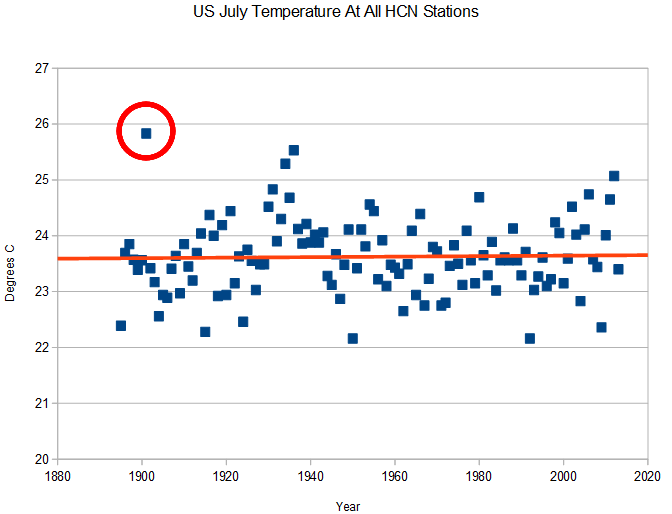
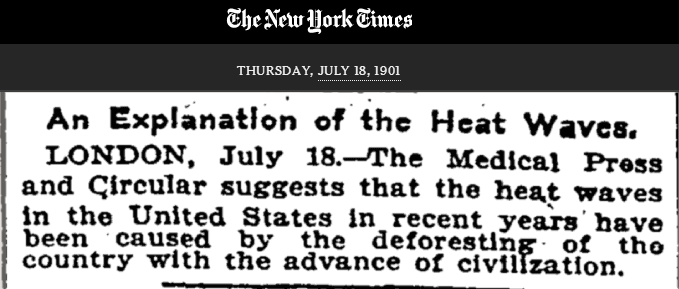
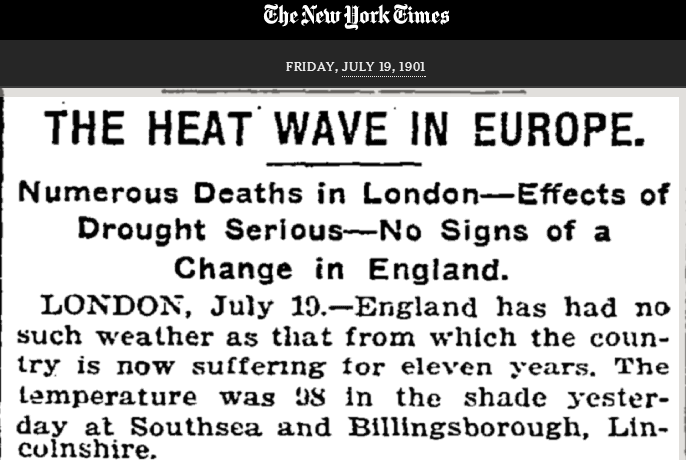
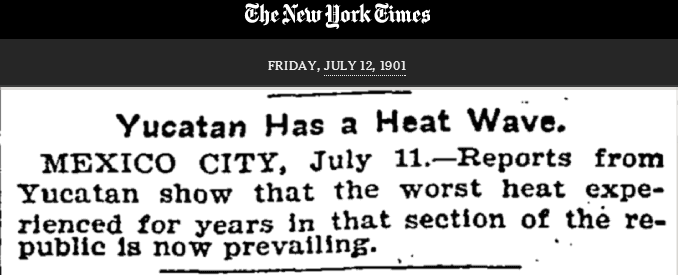
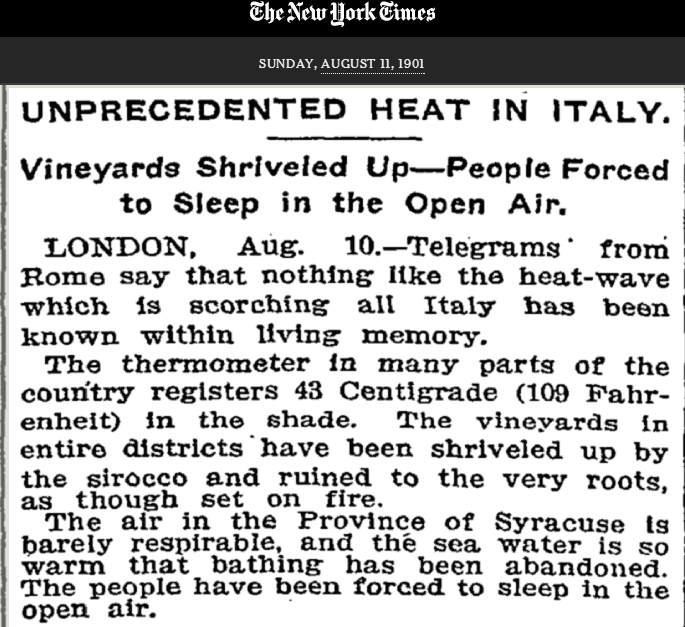

They may have had a point (indeed, they did. They were ‘not so dumb’ back then. Heck, by that time Maxwell and Hertz had done their seminal work and Marconi was doing his!)
Take Michigan, for instance … used to be many (both wet and dry) Prairies and Savannahs before being conquered by modern ‘western man’ (because, due both to lightning and native Indian ignition sources saplings/underbrush was eliminated almost yearly during the burn-offs).
Copyright Fair Use excerpts follow.
PRAIRIE AND SAVANNA IN SOUTHERN LOWER MICHIGAN:
HISTORY, CLASSIFICATION, ECOLOGY
PRAIRIES IN MICHIGAN
http://web2.geo.msu.edu/geogmich/prairielocations.html
In the book A Gentlewoman In Upper Canada (now Ontario) John Langton wrote to his father Thomas encouraging him to leave England and come to the colony. He told him it was 95 in the shade last Saturday. The letter was dated July 28, 1834. So even literature invalidates the lies of the global warmers.
So the use of “unprecedented” in news headlines has a long history of use in climate hysteria reporting.
DNR Warden Spots Icebergs On Lake Superior
http://minnesota.cbslocal.com/2014/06/07/dnr-warden-spots-icebergs-on-lake-superior
It’s first year ice. I predict Lake Superior will be ice free by the beginning of September
The ‘consensus’ claims it was the Koch brother’s grandparents’ fault.
I would say it has been retreating longer than that. Since about 1988 (by one measure) or 1989 (by another).
Reblogged this on the WeatherAction Blog.
…and civilization has been going backwards ever since; as evidenced by climate (and population, DDT, ozone, etc etc) alarmism.
Very interesting and educational, Steve.
I used to have a different image of the early XX century, I thought it was cold nearly all the time, but your posts here and some research have shown a very different picture.
For example, the aa-index of cycle #14 was considerably above our present levels.
Thanks! 🙂
Civilisation’s airlines are now the “Klimate Kriminals”. Who knew?
http://www.theguardian.com/big-energy-debate/aviation-carbon-supermarkets-emissions